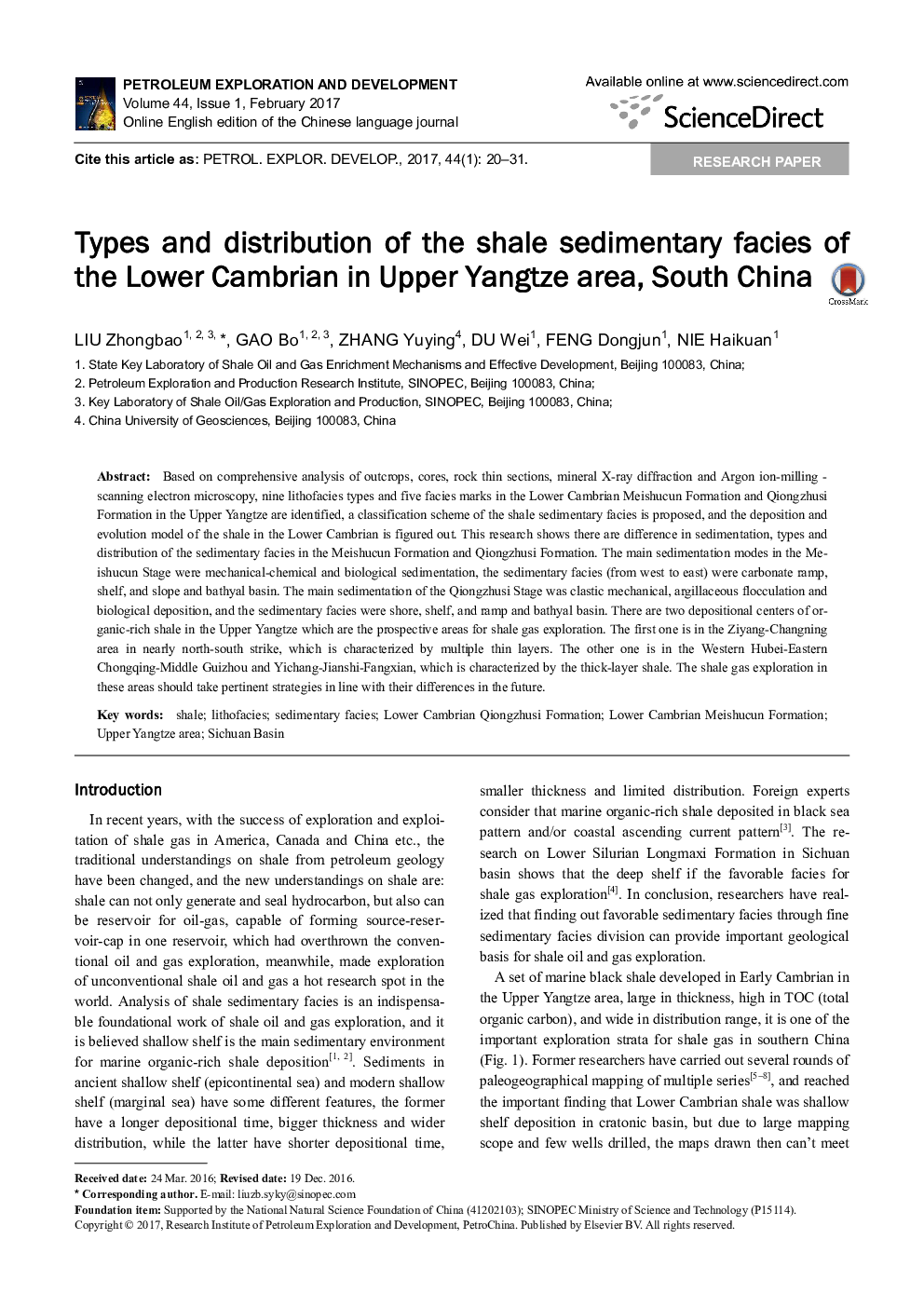| Article ID | Journal | Published Year | Pages | File Type |
|---|---|---|---|---|
| 8912288 | Petroleum Exploration and Development | 2017 | 12 Pages |
Abstract
Based on comprehensive analysis of outcrops, cores, rock thin sections, mineral X-ray diffraction and Argon ion-milling - scanning electron microscopy, nine lithofacies types and five facies marks in the Lower Cambrian Meishucun Formation and Qiongzhusi Formation in the Upper Yangtze are identified, a classification scheme of the shale sedimentary facies is proposed, and the deposition and evolution model of the shale in the Lower Cambrian is figured out. This research shows there are difference in sedimentation, types and distribution of the sedimentary facies in the Meishucun Formation and Qiongzhusi Formation. The main sedimentation modes in the Meishucun Stage were mechanical-chemical and biological sedimentation, the sedimentary facies (from west to east) were carbonate ramp, shelf, and slope and bathyal basin. The main sedimentation of the Qiongzhusi Stage was clastic mechanical, argillaceous flocculation and biological deposition, and the sedimentary facies were shore, shelf, and ramp and bathyal basin. There are two depositional centers of organic-rich shale in the Upper Yangtze which are the prospective areas for shale gas exploration. The first one is in the Ziyang-Changning area in nearly north-south strike, which is characterized by multiple thin layers. The other one is in the Western Hubei-Eastern Chongqing-Middle Guizhou and Yichang-Jianshi-Fangxian, which is characterized by the thick-layer shale. The shale gas exploration in these areas should take pertinent strategies in line with their differences in the future.
Related Topics
Physical Sciences and Engineering
Earth and Planetary Sciences
Geochemistry and Petrology
Authors
Zhongbao LIU, Bo GAO, Yuying ZHANG, Wei DU, Dongjun FENG, Haikuan NIE,
